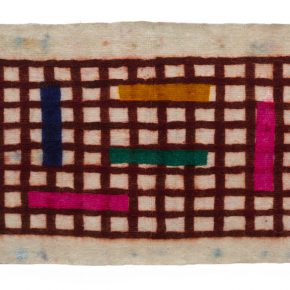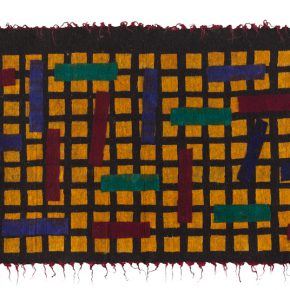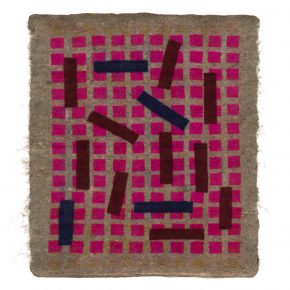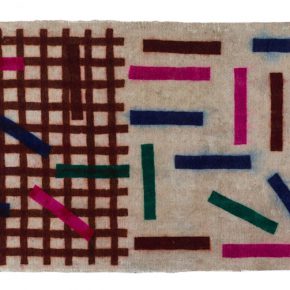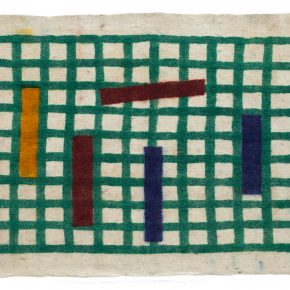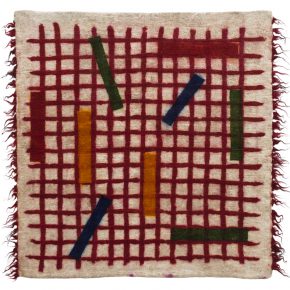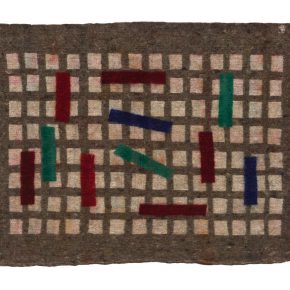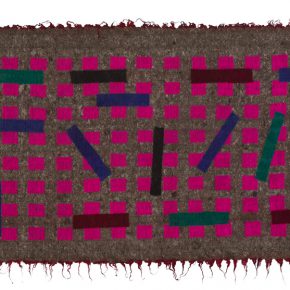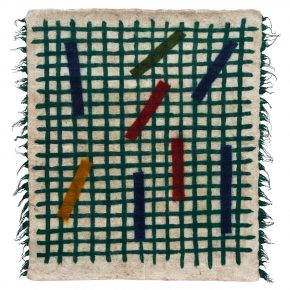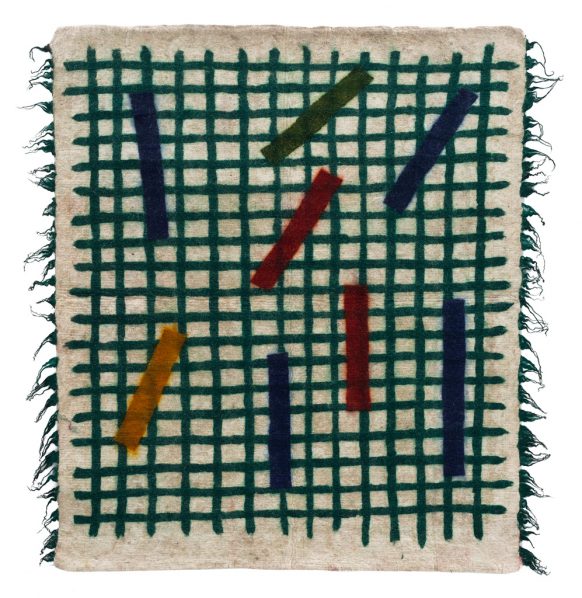
Pékin Fine Arts (Hong Kong) is pleased to host Sunlight Reflects (Sept. 24 - Nov.12), the gallery’s 1st solo exhibit in Hong Kong of artist Aniwar Mamat (b.1962 Kashgar, Xinjiang Province, China). Aniwar’s "tapestry paintings" were most recently seen at the OCAT Xian Museum (2016) in FELT: Aniwar Mamat Solo Exhibition; at Pékin Fine Arts Beijing gallery’s solo exhibition (2015); in the SWATCH Pavilion (2015) at the 56th Venice Biennale; and, in the international group exhibit Decorum: Carpets and Tapestries By Artists (2014) jointly organized by the Musée d’Art Moderne de la Ville de Paris and the Shanghai Power Station of Art.
Aniwar’s practice also includes painting, drawing, installation, photography and film work. The current exhibit, Sunlight Reflects, presents the artist’s most recent exploration of traditional Uyghur (Xinjiang) felting techniques adapted to his “tapestry painting” designs.
Aniwar’s reinterpretations of Uyghur wool felt tapestries, just completed in cooperation with local Xinjiang craftsman, premieref in Hong Kong at Pékin Fine Arts, together with Aniwar’s short documentary film. The film records a painstaking rolled-felt production process in a remote Uyghur village, as the artist introduces his fastidious taste for minimalist more geometric abstraction to local craftsmen, by arranging strips of color bands, one-by-one, across the soaked, pressed and rolled sheep’s wool felt. The film captures - without directly addressing - the stark divide between Xinjiang city- dwellers and rural villagers. What is also plainly evident is the uncertain future of traditional handcrafts and skilled craftsmen, (here, paying tribute to the labor intensive skills of Uyghur wool felt rolling and color - dying artisans), against market demand for mass-produced, machine-made goods.
Aniwar, a Uyghur-rooted, Beijing-based abstractionist of long-standing (since the late 1990’s), has built a career on quietly challenging prevailing social-realist norms. His fidelity to abstraction, long pre-dating the art world’s fashionable embrace of the neopop, op art abstraction of today, remains at the core of his artistic strategy. In recent years, the artist has experimented with adapting traditional Uyghur felt making to his vision of spatial, color-band and color-grid, abstraction. Whether on felt or on canvas, the artist’s abstract works are consistently minimalist, comprised of bright contrasting color bands, rejecting more popular narrative, folkloric motifs, while retaining the vivid Central Asian colors used in traditional Xinjiang carpet and textile design. Aniwar’s colors – taken from his Uyghur heritage – embrace the brighter hues first imported to China by Uyghur carpet makers over 1000 years ago via the Silk Road, and differ radically from colors preferred by the Han of Eastern China. Even today, the more vivid Central Asian color palette remains far removed from Beijing’s preferred greys, and Imperial reds and yellows.
Today, the artist’s painterly choices are extended to his felt tapestries: Aniwar’s compositions are decidedly the product of his minimalist aesthetic, while his fidelity to a Uyghur color palette remains traditional – evoking the emotion of his homeland. The colors chosen are never arbitrary, instead reflecting a fidelity to his heritage. His felt tapestry-making color choices may also stem from local limitations, reflecting limited access to dyes in these remote and economically challenged Xinjiang villages. The foreground or main body of each felt tapestry for instance is either off white, light or dark brown, remaining un-dyed, and true to the original lamb’s wool colors. Only the bands of color are dyed. On a practical level, the mash-up of contemporary design and traditional Uyghur colors makes the work a bit more familiar to local craftsman, does not radically inflate production costs, and is likely providing a simpler means of gaining their initial cooperation. Despite the modern film shoot, the unchanged workshop of the craftsman seems almost medieval, relying on skills and basic tools little changed over the centuries.
The artist’s experiment conducted in this remote Xinjiang village, marrying contemporary abstraction and age-old wool felt craftsmanship, is admirably idiosyncratic and typical of Aniwar’s singular vision. Aniwar consistently challenges so-called prevailing wisdom, deftly sidestepping artificial boundaries created by market demands. Unmoved by popular trends, Aniwar’s is a personal quest, a lifetime pursuit exploring the language of abstraction and cultural heritage. His unwavering determination to go his own way is Aniwar’s greatest strength – and may one day be among his greatest contributions to the Chinese contemporary art scene.
About the exhibition
Dates: Sep. 24 – Nov. 12, 2016
Venue: Pékin Fine Arts, Hong Kong
Courtesy of the artist and Pékin Fine Arts, for further information please visit http://pekinfinearts.com.


